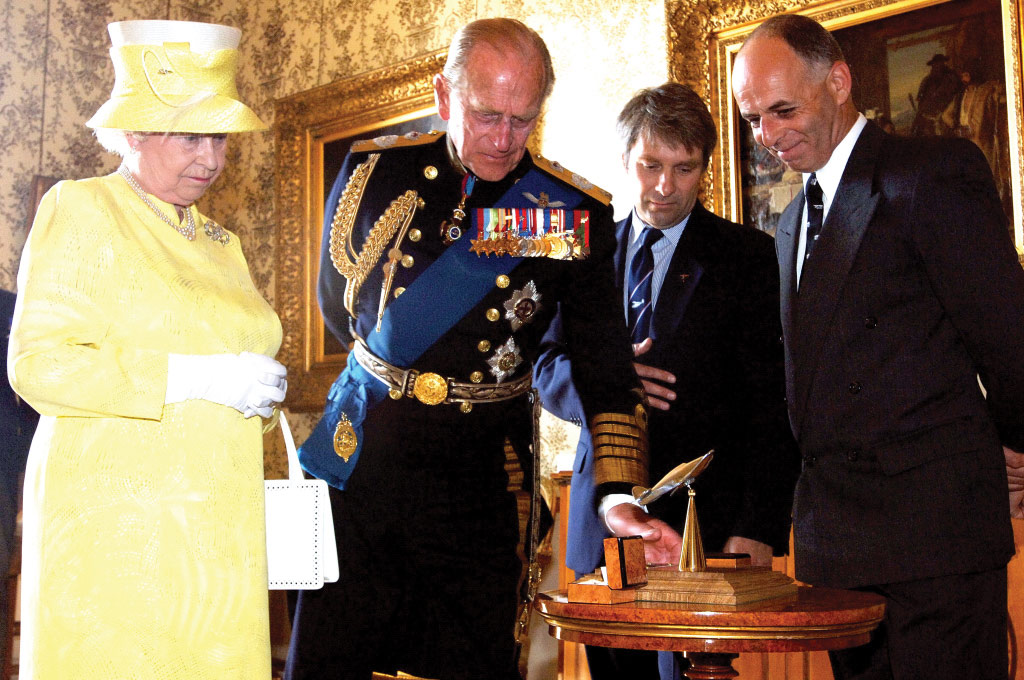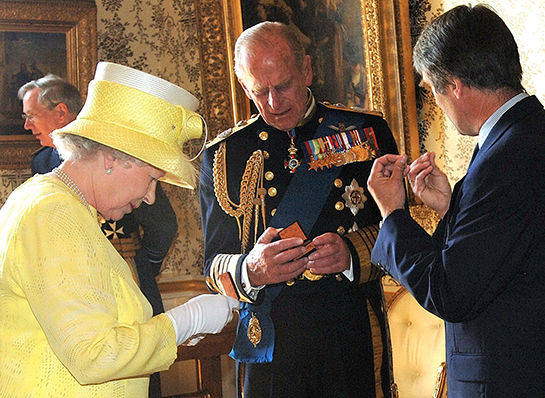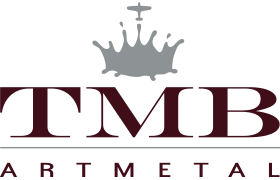ABOUT TMB ART METAL
TMB Art Metal is a small London based company dedicated to producing provenance sculptures, cufflinks and other items, the unique key to all being that they incorporate in their making metal or material originating from the actual iconic subject the item represents; these subjects principally being in the automotive, aeronautic, locomotive and maritime arenas.
The company was formed following the much publicised excavation of Hurricane fighter aircraft P2725 TM-B which crashed into Buckingham Palace Road, London on Battle of Britain Day, 15th September 1940. Post-excavation, and with TM-B’s Merlin engine safely on display within the Imperial War Museum, a limited number of Hurricane sculptures were crafted using actual ‘recycled’ redundant metal originating from the Hurricane itself. One example was presented to Her Majesty The Queen at Buckingham Palace – a sculpture made of metal from the actual aircraft that had saved the Palace, her home, six decades earlier.
Such was the interest in these unique sculptures actually made of history and imbued with provenance that TMB Art Metal was formed to expand the concept and the exclusive limited edition product range.

Christopher Bennett, accompanied by colleague Steve Vizard, present HM The Queen and Duke of Edinburgh with one of the first ever Hurricane sculptures crafted of metal recovered from P2725 TM-B, together with special bronze lapel pins, also made of metal from TM-B. We understand the sculpture was put on display in the library at Buckingham Palace.

Christopher Bennett explains the story behind the miniature bronze Hurricane pins made of metal from the aircraft that saved Buckingham Palace back in 1940, during the height of the Battle of Britain. It was nice that the Duke was attired appropriately for the occasion!
I am often asked why TMB Art Metal is called TMB Art Metal and feel I should explain. TMB Art Metal came about following my successful excavation of P2725 TM-B, the Buckingham Palace Road Hurricane. This was the Hawker Hurricane fighter that, piloted by Ray Holmes, famously rammed a German Dornier bomber over London on 15th September 1940, Battle of Britain Day. Ray, who believed the Dornier was intent on bombing Buckingham Palace, had run out of ammunition and decided the only way to stop this dastardly intruder was to “hit him for six”. The downed bomber crashed on the forecourt of Victoria Station whilst the Hurricane, minus Ray who had baled out, came to earth at the crossroads of Buckingham Palace Road and Ebury Bridge SW1, a quarter mile from Buckingham Palace. The mangled and smashed P2725 buried itself some twelve feet beneath the road, where it remained until 2004.
After many years of research to pinpoint the exact location where the Hurricane had come to ground, I orchestrated an excavation to recover this famous aircraft’s remains on 29/30th May 2004. The ‘dig’, televised live, was a total success, a large proportion of P2725’s smashed Rolls-Royce Merlin engine, together with other items of wreckage, including the pilot’s control column, being recovered. Initially I loaned the engine and the control column to the Imperial War Museum for display, but the items have now been moved to the RAF Museum, Hendon, appropriately where P2725 took off from on that fateful day…
In 2005, as an afterthought I decided to have some simple Hurricane sculptures cast from corroded and otherwise useless shards of aluminium engine casing. Some of these resultant sculptures were for presentation (I even presented one to HM The Queen at Buckingham Palace), but others I decided to sell commercially. Such was the interest in these provenance sculptures of a Hurricane, made of and from the most famous Hurricane in the world, with an incredible back story, that I decided to expand the concept, and TMB Art Metal was born.
The ‘TMB’ part of my company’s name comes from Ray Holmes’ Hurricane’s call sign, ‘TM-B’, whilst the name ‘Art Metal’ originated from the company in the building on the corner of Buckingham Palace Road and Ebury Bridge, back in 1940. Called “Art Metal Steel Office Furniture”, this building was featured prominently in the background of the film taken by the fire brigade of the crash site on 15th September 1940, and was a vital piece of evidence in my search for the Hurricane’s resting place. Indeed, without it TM-B would likely still be lying beneath that busy road junction and TMB Art Metal would not have been created. So even the company name has provenance!
Until not so long ago, amazingly the dig location was still visible in the road via the 10 feet square patch of dissimilar tarmac, but its now gone. However, if you take a centre line down Ebury Bridge and the same for Buckingham Palace Road, where they cross is where TM-B was found.
Whilst it would be true to say that starting a luxury goods business from scratch has been challenging (I was a photographer before) it has been an amazing journey and little did I know how that excavation back in May of 2004 would change my life. Although TMB’s USP is “Creating Passion For Provenance”, involving original historic donor material in everything we do, I strive to create imaginative, different and cutting edge designs with quality to match, and am proud of what has been achieved.
Christopher Bennett
For those wishing a more in-depth story about Hurricane P2725 TM-B’s history and recovery, it can be found here: Hurricane P2725 TM-B, London’s Lost Fighter
